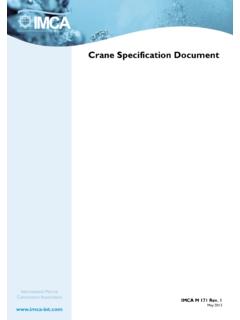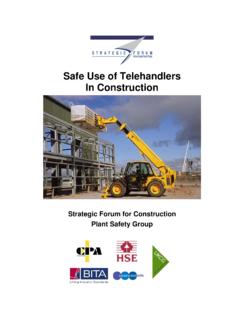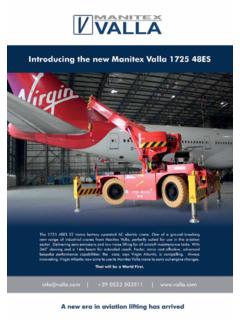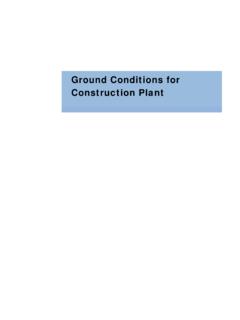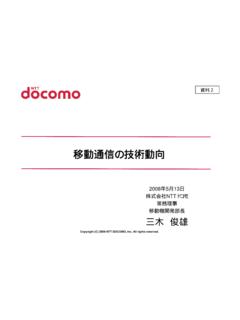Transcription of Ground Conditions for Construction Plant - …
1 Ground Conditions for Construction Plant Ground Conditions for Construction Plant 2 October 2014 Ground Conditions for Construction Plant Strategic Forum for Construction Good Practice Guide Reference No. CPA 1402 First Published: October 2014 Published by: Construction Plant -hire Association 27/28 Newbury St London EC1A 7HU Telephone: 020 7796 3366 Email: CPA Copyright October 2014 Ground Conditions for Construction Plant 3 October 2014 Contents Page Foreword .. 4 1. Introduction and Scope .. 5 2. Definitions .. 7 3. Legal Duties .. 10 4. Roles and Responsibilities .. 11 5. Principles of Task Planning .. 14 6 The Ground Assessment Process.
2 20 7. Definition of the Task to be Undertaken .. 22 8. Selection of Plant .. 24 9. Plant Loads and Forces .. 26 10. Ground 35 11. Determination of Ground Suitability .. 39 12. Selection and Design of Measures to Ensure Ground Suitability .. 44 13. Selection and Design of Measures to Reduce Imposed Loads .. 47 14. Communication .. 49 Annex A Calculation of Plant Loads and Forces .. 50 Annex B Soil Types and Characteristics .. 52 Annex C Typical Equipment Used to Spread Loads .. 53 Annex D Precautions When Using Outrigger Pads .. 55 Annex E Ground Capacity for Outrigger Mats - Simplified Method .. 58 Annex F Examples of the Application of Annex E .. 60 Annex G Examples of Typical Configuration and Loading Information.
3 61 Annex H Factors of Safety .. 65 Annex I Legal Framework .. 67 Annex J Environment Agency Guidance .. 69 Annex K Further Information and Guidance .. 70 Annex L Working Group Membership .. 72 NOTE: Whilst every care has been taken to ensure the accuracy of the material contained within this booklet, no liability is accepted by the Construction Plant -hire Association in respect of the information given. No material from this booklet may be reproduced in any shape or form without the permission of the Construction Plant -hire Association. Ground Conditions for Construction Plant 4 October 2014 Foreword Construction Plant is a vital part of the Construction process. Plant stability often depends on the integrity of the Ground on which it stands.
4 If the Ground fails, Plant can overturn or collapse. In the past such incidents have led to a significant number of serious accidents, some tragically fatal. Not only do these accidents have a terrible cost in terms of human suffering, they also have a significant financial cost for all concerned. Consequently there is a very strong business case for improving safety performance. Effective assessment of Ground Conditions is essential to assist with safe installation, setting up and operation of Construction Plant . The purpose of this guidance is to help those involved with planning and carrying out Plant operations to achieve a better awareness of Ground Conditions and how Plant selection and use can affect the Ground .
5 This guidance will also help those carrying out Ground assessment to be aware of their own limitations - Ground engineering can be a complex topic. It will help with planning simple operations and help site staff to work more effectively with experts. It is essential that all involved in planning Plant operations know when to stop and seek advice from a structural or geotechnical engineer. This guidance has been developed by a working group representing all parts of the industry. It provides clarity on the assessment of Ground Conditions and will help Construction Plant suppliers and users improve health and safety standards. The guidance addresses planning, Ground assessment, Plant selection and measures to ensure Ground stability.
6 The advice in this document is straightforward, comprehensive and easy to adopt. This guidance may go further than the minimum you need to do to comply with the law. I thank those who have been involved in its preparation and commend the guidance to anyone who owns, supplies or controls the operation of Construction Plant . Please read the publication and turn the advice into action. Philip White HM Chief Inspector of Construction Chair of the Health and Safety Executive s Construction Industry Advisory Committee (CONIAC). Ground Conditions for Construction Plant 5 October 2014 Introduction and Scope Failure of the Ground on which Construction Plant stands and moves is a frequent cause of minor incidents and near misses on sites, together with a significant number of serious injuries and fatalities.
7 In addition to the impact on the lives of those involved, these events can lead to delays in Construction programmes and significant commercial loss such as unrecoverable management time, loss of reputation and effect on future workloads. An HSE publication on the cost of accidents estimated that for each 1 of accident cost recoverable through insurance, a further 8 to 36 was unrecoverable and had to be borne by the employer. From this it can be seen that adequate assessment of Ground to establish its ability to support Plant , is essential if these incidents are to be avoided. A building was being demolished using an excavator standing on the first floor. The floor collapsed bringing down the building.
8 The excavator fell into the basement and was partially buried by rubble, trapping the operator in the cab. Unfortunately by the time rescuers reached the operator he had died. The aim of this document is to provide clear guidance on the assessment of Ground Conditions and the measures that can be taken to both improve Ground and reduce loads imposed on the Ground . Ground engineering can be a complex topic and part of the purpose of this guidance is to enable Construction personnel to decide when they need to consult an expert geotechnical or structural engineer. It is essential that those carrying out Ground assessment are aware of their own limitations and know when to stop and consult those expert in the field.
9 This document is aimed at all those with an interest in the stability of Plant including: Clients Plant hire companies Training organisations Designers Builder s merchants Utilities Contractors of all sizes Plant manufacturers The types of Construction Plant covered by this document include: Mobile cranes (wheeled and crawler) Telehandlers Excavators Ground improvement Plant Demolition equipment Mobile self erecting tower cranes Vertical Mast fork trucks Drilling rigs Dumpers and dumptrucks Road going vehicles including delivery vehicles, tippers and concrete truck mixers Self erecting tower cranes Loading shovels Top slew tower cranes Pipe laying equipment Mobile Elevating Work Platforms Rollers and compaction equipment Jacking, winching and lifting equipment Lorry loaders Dozers Tractors Piling rigs Concrete pumps and booms Specialist landscaping equipment Ground Conditions for Construction Plant 6 October 2014 The scope of this document excludes.
10 Waterborne and marine Plant Jack up barges Work at sea Underground Plant Non mechanical Plant (scaffolding, formwork, Ground support etc) Construction hoists, mast climbing work platforms and transport platforms Services above Ground The basic process of Ground assessment is shown in Figure 1 below. A more detailed flow chart of the process is shown in Figure 2. Figure 1 - A Simple Outline of the Ground Assessment Process Ground Conditions for Construction Plant 7 October 2014 Definitions of terms applying to this document competent person person with sufficient knowledge of the specific tasks to be undertaken and the risks which the work will entail, and with sufficient experience and ability to enable them to carry out their duties in relation to the works, to recognize their limitations, know where to obtain further authoritative advice and to take appropriate action in order to prevent harm to those carrying out Construction work, or those affected by the work NOTE: Modified from HSE CDM2007.

